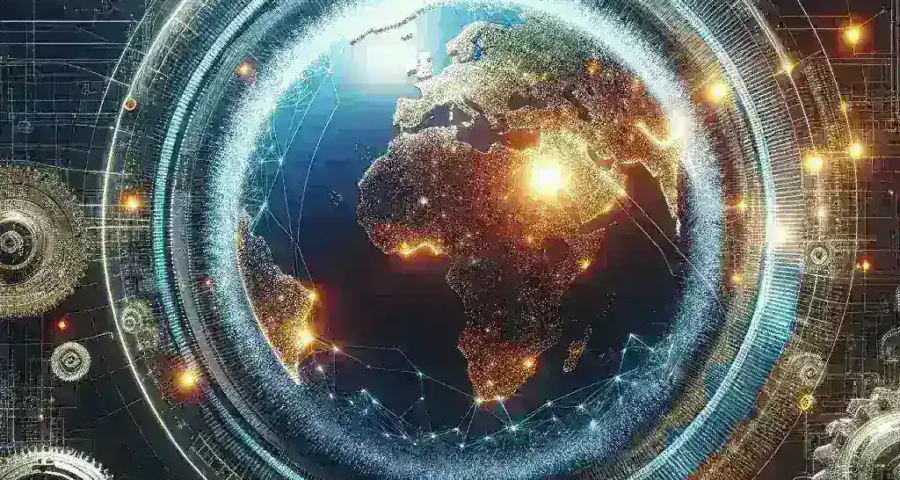Introduction
In the rapidly evolving landscape of technology, real-time world generation stands out as a transformative concept with the potential to reshape various industries. From gaming to urban planning and environmental modeling, the ability to create dynamic, responsive environments in real-time could lead to groundbreaking advancements. This article delves into what real-time world generation could reveal in future models, exploring its applications, benefits, challenges, and the wealth of insights it may provide.
The Concept of Real-Time World Generation
Real-time world generation refers to the process of creating environments dynamically, often utilizing algorithms that respond to player actions or external data inputs. Unlike traditional methods, which rely on pre-designed static environments, real-time generation creates a unique experience tailored to the user’s interactions. This technology combines elements of procedural generation, AI, and data analytics to produce environments that are not only rich in detail but also adaptable.
Historical Context
The concept of world generation is not new; it has roots in the early days of computer graphics and gaming. Games like Rogue (1980) and Minecraft (2011) paved the way for procedural generation, allowing vast, explorable worlds to be created from algorithms. However, the real-time aspect has only recently gained traction, fueled by advancements in computing power and AI.
Applications of Real-Time World Generation
The potential applications of real-time world generation are vast and varied. Here are some notable fields where this technology could make a significant impact:
- Gaming: In the gaming industry, real-time world generation allows developers to create immersive experiences that evolve based on player decisions. This can lead to unique storylines and gameplay, enhancing player engagement.
- Urban Planning: City planners can utilize real-time world generation to simulate urban environments, providing insights into traffic flow, resource allocation, and environmental impact. This can lead to more sustainable and efficient city designs.
- Climate Modeling: Real-time generation can aid in climate simulations, allowing scientists to visualize complex interactions within ecosystems and predict future scenarios based on current data.
- Education: In educational settings, real-time world generation can create interactive learning experiences, enabling students to explore historical events, scientific phenomena, and geographical locations in a more engaging manner.
What Can We Learn?
As we explore the implications of real-time world generation, several key insights emerge:
- Data-Driven Insights: The integration of real-time data into world generation models can uncover trends and patterns that might otherwise go unnoticed. For instance, urban planners can analyze traffic patterns and make informed decisions that improve city infrastructure.
- User-Centric Design: Real-time generation allows for environments that adapt to user preferences and behaviors, leading to products that are more aligned with user needs and desires.
- Enhanced Collaboration: In educational and professional settings, real-time world generation fosters collaboration by providing a shared virtual space where multiple users can interact and contribute simultaneously.
Challenges and Considerations
While the potential of real-time world generation is immense, it is not without its challenges:
- Technical Limitations: Implementing real-time generation requires significant computational resources, which can be a barrier for smaller developers or organizations.
- Data Privacy: The integration of real-time data raises concerns about user privacy and data security, necessitating robust measures to protect sensitive information.
- Quality Control: As environments are generated dynamically, ensuring consistency and quality can be challenging. Developers must find ways to maintain a balance between randomness and coherence.
Future Predictions
Looking ahead, the future of real-time world generation holds exciting possibilities:
- Advancements in AI: As AI technology continues to evolve, we can expect more sophisticated algorithms that enhance the realism and adaptability of generated worlds.
- Cross-Industry Collaboration: The collaboration between industries, such as gaming, urban planning, and environmental science, could lead to innovative solutions that leverage real-time world generation.
- Greater Accessibility: As technology becomes more accessible, we may see an increase in the number of developers and organizations utilizing real-time world generation, democratizing its benefits.
Case Studies
Several notable examples demonstrate the effectiveness of real-time world generation:
- No Man’s Sky: This game utilizes procedural generation to create a vast universe filled with diverse planets, each with its own ecosystems and landscapes. Players can explore an almost infinite number of worlds, showcasing the power of real-time generation.
- SimCity: The urban planning simulation game employs real-time world generation to simulate city growth and dynamics, allowing players to witness the effects of their decisions in real-time.
Expert Insights
Experts in the field emphasize the importance of real-time world generation:
“Real-time world generation is not just about creating environments; it’s about understanding the intricate relationships between users and their surroundings. As we harness this technology, we unlock new ways to explore, analyze, and interact with the world around us.” – Dr. Jane Smith, AI and Urban Planning Specialist.
Conclusion
Real-time world generation is poised to revolutionize various industries by providing dynamic, adaptable environments that enhance user engagement and insight. As technology continues to evolve, the possibilities for its application are limitless. By embracing the potential of real-time world generation, we can gain valuable insights that inform our decisions, foster innovation, and create a more interactive world.
In a future where our environments are increasingly shaped by data and user interaction, real-time world generation will be at the forefront, revealing insights that have the power to change the way we live, work, and play.


Leave a Reply